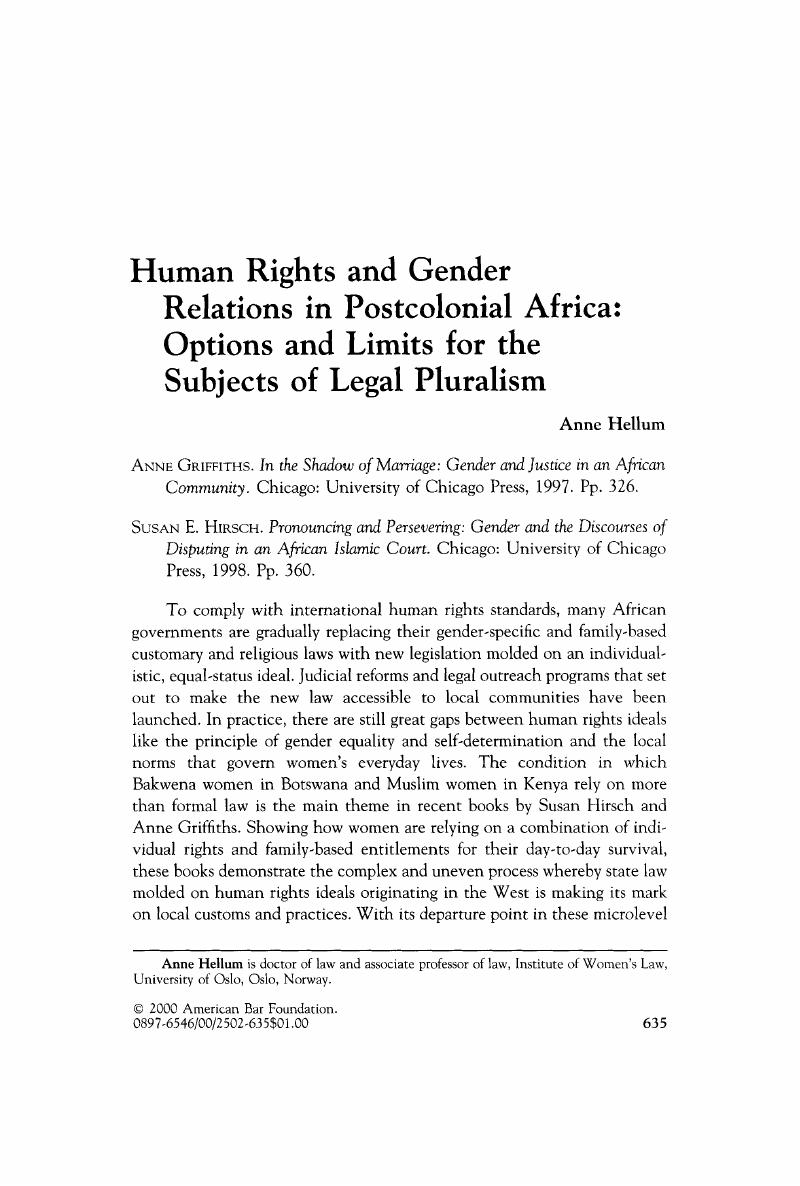Crossref Citations
This article has been cited by the following publications. This list is generated based on data provided by Crossref.
Charlesworth, Hilary
2009.
Gender and Global Politics in the Asia-Pacific.
p.
19.
Burgess, Gemma
2011.
The Uneven Geography of Participation at the Global Level: Ethiopian Women Activists at the Global Periphery.
Globalizations,
Vol. 8,
Issue. 2,
p.
163.
Corradi, Giselle
2011.
Access to Justice in Pemba City: How Exploring Women’s Lived Realities with Plural Law Uncovers Programmatic Gaps.
The Journal of Legal Pluralism and Unofficial Law,
Vol. 43,
Issue. 64,
p.
1.
Bond, Johanna E.
2011.
The Future of African Customary Law.
p.
467.
Burgess, Gemma Lucy
2012.
When the personal becomes political: using legal reform to combat violence against women in Ethiopia.
Gender, Place & Culture,
Vol. 19,
Issue. 2,
p.
153.
Gebeye, Berihun A.
2017.
Decoding legal pluralism in Africa.
The Journal of Legal Pluralism and Unofficial Law,
Vol. 49,
Issue. 2,
p.
228.
Anying, Irene Winnie
and
Gausset, Quentin
2017.
Gender and forum shopping in land conflict resolution in Northern Uganda.
The Journal of Legal Pluralism and Unofficial Law,
Vol. 49,
Issue. 3,
p.
353.
Ruffin, Fayth
2019.
Trajectory of Land Reform in Post-Colonial African States.
p.
91.
Chala, Dejene Gemechu
and
Gemede, Nega Jibat
2022.
Legal pluralism, gender and justice: women’s rights to property under marriage dissolution among the Oromo in Jimma, Ethiopia.
Legal Pluralism and Critical Social Analysis,
Vol. 54,
Issue. 2-3,
p.
278.





